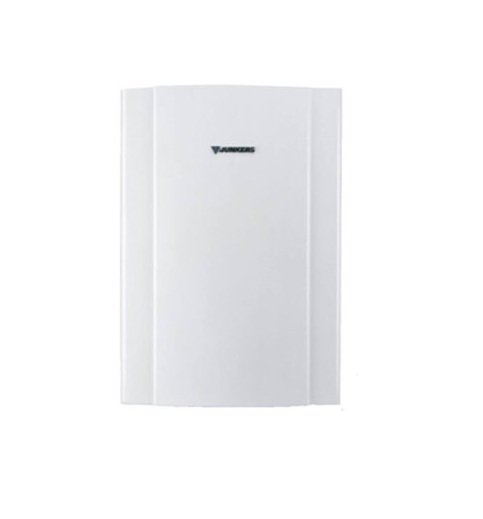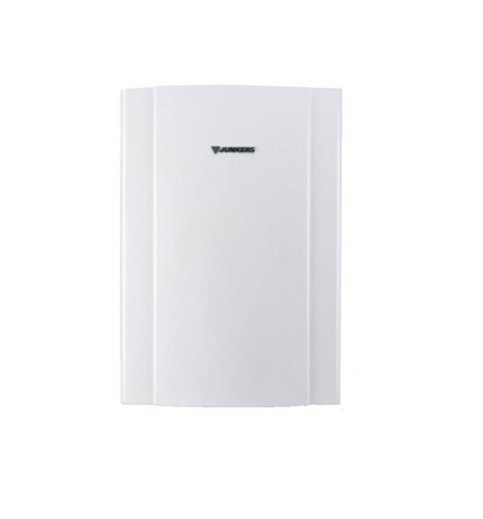Junkers Cerapur Balcony Zwb 28-1 Eb Methane Condensing Boiler For Outdoor Complete With Smoke Kit - New Erp
Junkers Cerapur Balcony Zwb 28-1 Eb Methane Condensing Boiler For Outdoor Complete With Smoke Kit - New Erp - Coaxial smoke kit is backordered and will ship as soon as it is back in stock.
Couldn't load pickup availability
How shipping works
How shipping works
Shipping costs vary depending on the weight and shipping method of your order. Our shipping services:
- Standard Shipping: Estimated delivery within 2 to 5 business days
- Premium Shipping: Guaranteed delivery within 24 business hours
- Premium Shipping + Home Delivery: Guaranteed delivery within 24 business hours
See the tables for standard shipping prices for Italy and the Minor Islands and Disadvantaged Areas.
For more details on Premium Shipping, please visit the Premium Shipping page.
Customer service
Customer service
Our customer service team is dedicated to providing support to our customers with any issues or questions they may have before or after purchasing our products.
Use the direct communication channel to speak with one of our representatives, or send us an email at one of the addresses listed on the contact us page.
Our customer service team is made up of highly qualified professionals who are always ready to help customers resolve any issue or answer any question quickly and efficiently. We are committed to ensuring maximum customer satisfaction and providing the highest quality after-sales service. So, if you need assistance, don't hesitate to contact us; we'll be happy to help in any way we can.
Description
Description
Overview
JUNKERS CERAPUR BALCONY ZWB 28-1 EB CONDENSING BOILER for outdoor use COMPLETE WITH FUME KIT - NEW ErP 2016: Wall mounted condensing outdoor boiler with DHW production, combinable with solar thermal systems for DHW using Solar Kit..
Technical specifications
Heating and DHW energy efficiency class (ErP): A/A
For heating and domestic hot waterÿ
Loaded profiles declared XL
Nominal heat input (heating): 24.6 kW
Nominal thermal power (sanitary): 28 kW
Nominal heat input (sanitary): 28.6 kW
Thermal efficiency at nominal power 40/30°C: 104.3%
Efficiency thermal useful at 30% nominal load 40/30°C: 109.2%
Continuous sanitary production: 13.4 l/min
Sanitary temperature range that can be set: 40/60°C
NOx class: 5
Absorbed electric power: 230 W
Degrees of protection: IP X5D
Dimensions (D x W x H):ÿ285 x 535 x 775ÿmm; 54kg
Version:ÿMETHANEÿ
Main features
CERAPUR BALCONY
Wall-mounted condensing boiler for outdoor use with DHW production, which can be combined with solar thermal systems for DHW using the Solar Kit.
Small and compact,ÿCERAPURÿBALCONY has been designed to solve space problems and resist bad weather, while ensuring maximum comfort in the production of heat and domestic hot water.
Advantages:
Wall-mounted condensing boilers for outdoor use with DHW production, which can be combined with solar thermal systems for DHW using the Solar Kit.
Certifications achieved of tipC13, C33, C63, C83, B33.
Suitable for use with 60 mm drains.
Class 5 emissions required by UNI EN 297, UNI EN 483 and UNI EN 15502 standards.
External installation.
We will remotely control the digital room chronothermostat with the following functions: two fixed heating programs P1 and P2; a programmable P3 heating program with 22 available time slots; setting of the operating temperatures both in heating and in DHW; display of boiler operating status and any anomalies; in combination with the external probe (accessory) the functioning as a climatic control unit is activated which automatically regulates the delivery temperature according to the external temperature.
Automatic antifreeze function up to an external temperature of -15°C, on both the sanitary and heating sides.
Fully automatic filling function for the heating circuit.
Continuous power modulation (DHW heating).
Primary heat exchanger in patented high efficiency aluminosilica alloy.
Domestic hot plate heat exchanger for condensing also in DHW.
6 liter heating expansion tanks.
Circulator in Energy Class A.
The ErP legislation and the new energy labels
The future of heating systems
Starting fromÿ26 September 2015ÿthe heating systems and for the production of hot water, in order to be placed on the market, will have to comply with theÿErPÿ (Energy Related Products) regulations issued by the European Union. The ErP standards favor the eco-compatible design of products that consume energy from fossil fuels and have the aim of reducing energy consumption and CO2 emissions, as well as providing consumers with transparent and homogeneous information on the energy efficiencyÿ of appliances, favoring comparison. Regulations N 811/2013 and 812/2013 provide for a specific energy labeling of appliances for heating and the production of domestic hot water. Regulations N 813/2013 and 814/2013 prescribe, among other things, the minimum energy efficiency and pollutant emissions requirements that manufacturers of equipment for heating and domestic hot water production must comply with. These regulations therefore raise energy efficiency standards, improving system performance and excluding underperforming technologies from the market.
The energy labelÿwill be supplied by the manufacturer with the appliance and will represent a concrete help for the consumer, allowing him to better understand the characteristics of the system, acquire greater awareness of energy saving, allow him to choose better what to buy. The energy label will provide information on the energy class of the product, on a scale between A++ and G, and on other additional notations, such as power and noise emissions.
The ErP legislation provides for two types of labelling:
the former is supplied by the manufacturer together with the product for heating and/or domestic hot water production appliances
the second for systems composed of several elements.ÿ
In this second case, the label indicates the levels of energy efficiency that can be reached thanks to all the components used, allowing for an increase in the score attributed to each appliance and increasing the energy class of the system: therefore, the task of whoever builds/installs the system is to provide the consumer with the correct explanatory label .
The ErP standards represent an opportunity to develop a market of highly efficient technologies, such as condensing, heat pumps, solar thermal, cogeneration and the integration of different energy sources in a single system. These technologies will have an impact on consumption in the home, approximately 80% of which is due to heating and the production of hot water, and are currently incentivized at the tax level.
Junkers Boschÿ already in line with the dictates of the ErP legislation, represent a future that has always distinguished the brand.
Warranty
All products for sale on our site are new and packed. The guarantee on this article is 24 months from the date of purchase.
Technical Data Sheet
Technical Data Sheet
- peso: 35.0 kg
- classe energetica produzione acs: A
- classe energetica riscaldamento: A
- gas: Methane
- marca: Junkers Bosch
- metri quadri : 180
- modello: CALD_1922
- potenza in kw: 28
- potenza nominale: 28
- superficie riscaldabile mq: 180




